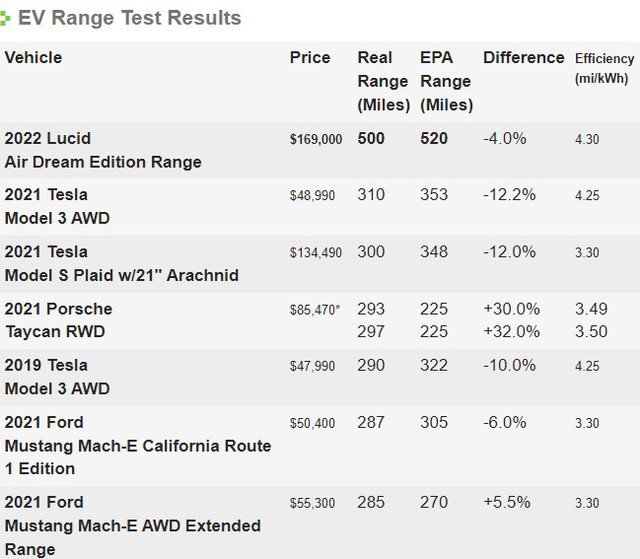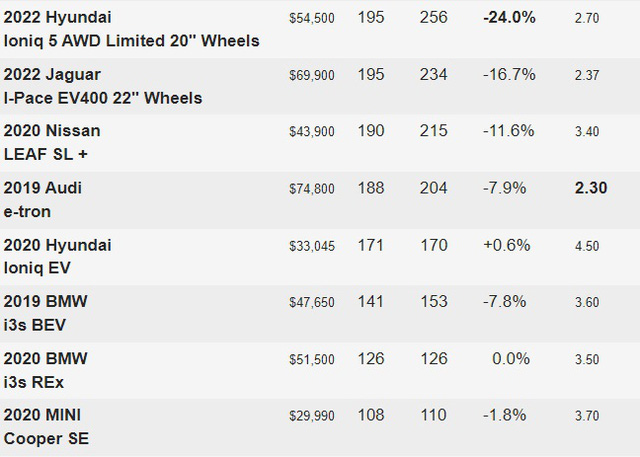Porsche ‘eels’ users in a way that few expect, Hyundai disappoints
How many kilometers (or miles) an electric vehicle can travel on a single charge depends on many factors including speed, ambient temperature, terrain and other traffic conditions.
That’s why standards like EPA or WLTP are only considered estimates for the range of an electric vehicle. In actual conditions, the measured parameters will be quite different. InsideEVs tested the range of today’s most popular electric vehicles (EVs) in the US at a constant speed of 70 mph (112 km/h).
Of course, this test is not perfect. There are still uncontrollable factors like wind, traffic and weather. However, this site has tried to set everything to the closest to the highest standards, such as setting the correct tire pressure to the recommended level, checking the odometer with GPS, charging the car to 100% and entering immediately. onto the highway or just after a few miles and drive at a constant 70 mph throughout the journey.
They also tried to run 2 tests in parallel, then the results were average. In addition, parameters such as temperature and weather are also monitored to see how these factors affect the vehicle’s operating range.



The results of testing the actual range of InsideEVs with some popular electric vehicle models in the US.
A total of 27 vehicles were tested (including different versions of the same model). As a result, most models have a difference of about 5-15% (most have a lower range than the theory) compared to the announced level. In particular, there are some models with a larger difference. For example, the Jaguar I-Pace EV400 (22-inch wheels) has a range of only 195 miles while the claimed number is 256 miles – a 16.7% difference, or the Chevy Spark EV has a 23% difference compared to the claimed ( 63 miles versus 82 miles). In particular, the Hyundai Ioniq 5 AWD owns a difference of up to 24% – the model with the largest difference between the announced number (256 miles) and the actual number (195 miles).
Porsche, meanwhile, is a big surprise when its Taycan model has a much larger actual range than announced – approximately 30%. In particular, the Taycan 4S version has an even greater range of 36.9% compared to the announced number (278 miles compared to 203 miles).
at Blogtuan.info – Source: cafebiz.vn – Read the original article here



